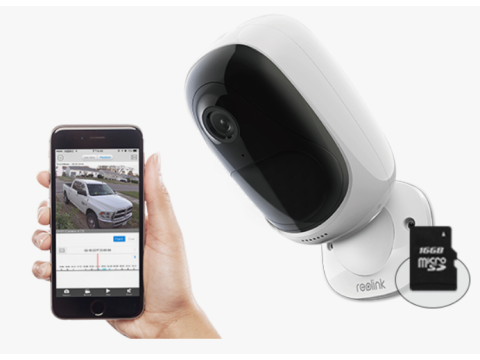Main Content
At safsale.com, we understand that traditional video surveillance systems often rely on a digital video recorder (DVR) not only for archiving footage but also as an interface between cameras and display devices. However, modern solutions allow you to set up surveillance without a recorder, leveraging internet connectivity and innovative hardware setups. 🌐📹
Recorder-Free Surveillance: Key Methods
There are several ways to implement a surveillance system without a dedicated recorder. The choice depends on the specific security requirements and the installation environment. Below, we explore the main methods along with their advantages and drawbacks.
1. Cloud-Based Surveillance
How It Works:
Cloud video services utilize a peer-to-peer (P2P) technology, connecting an IP camera directly to a computer, tablet, or smartphone via the internet. The cloud server from the service provider identifies your camera regardless of whether it uses a static or dynamic IP address.
Requirements:
- Internet Connection: Can be wired (Ethernet) or wireless (3G/4G/5G) as long as it provides sufficient speed to handle the video stream.
- Cloud Service Registration: Create an account with the provider and install the corresponding application for real-time video viewing.
- Hardware: Ensure your camera supports internet connectivity (some models come with built-in Wi-Fi, eliminating the need for a router or modem).
Pros and Cons:
- Pros:
- Remote Access: Watch live video feeds from anywhere with an internet connection.
- Security: Cloud storage keeps your video archive secure from physical tampering.
- Cons:
- Cost: Cloud storage fees are recurring and can be significant. For example, pricing is often listed per camera—typically costing several tens of dollars per month for a 7-day archive.
- Bandwidth Dependence: The quality and stability of the stream depend on your internet speed.
💡 Tip: Always verify the compatibility between your IP camera and the chosen cloud service to ensure seamless integration.
2. Memory Card Storage
Some modern IP cameras support onboard memory cards with capacities up to 128–256 GB. This approach allows for local recording of footage for several days without the need for a recorder.
Key Points:
- Motion Detection: Make sure the camera’s built-in motion detector is properly configured to optimize storage use by recording only when needed.
- Flexibility: This setup works well in both autonomous mode and remote access scenarios.
- Cost Efficiency: Utilizing memory cards can be more cost-effective compared to subscription-based cloud storage plans.
📌 Note: Even when using a memory card, remote access might require a basic cloud service to view recordings, often available on a free tier.
3. Direct Camera Connection Without a Recorder
If your setup does not require video archiving, you can connect the camera directly to a computer or even a television. This method is particularly optimal for IP cameras paired with dedicated software that allows live streaming through a web browser.
Advantages:
- Simplified Setup: Eliminates the need for additional hardware such as DVRs.
- Cost Savings: Reduces expenses by relying on existing computing devices for video display.
Considerations:
- Performance: While direct connection setups can be practical, they may lack some advanced features like those offered by traditional DVR systems.
- Quality: USB converters and standard webcams typically do not deliver the high-quality, feature-rich surveillance required for robust security.
Conclusion
Modern recorder-free video surveillance systems offer flexibility and innovative methods to meet your security needs. Whether you choose cloud-based services for remote storage, onboard memory cards for local archiving, or direct IP camera connections for live monitoring, each solution comes with its own set of advantages and considerations. At safsale.com, we provide expert guidance and quality products designed to conform to American standards (such as those defined by ANSI) and optimized for a seamless user experience. 🔧🚀
Explore our range of recorder-free surveillance solutions today and experience a smarter, more efficient way to secure your home or business!

